Resultados de la búsqueda67 resultados
-
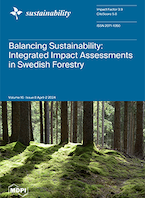
Promoting (Safe) Young-User Cycling in Russian Cities: Relationships among Riders’ Features, Cycling Behaviors and Safety-Related Incidents
Sergio Useche, Francisco Alonso, Aleksey Boyko, Polina Buyvol, Irina Makarova, Gleb Parsi, Mireia Faus
(2024). ArticleSustainability. Num.16(8):3193
Background: Promoting cycling, walking and other ‘active’ transportation means continues to be a shared guideline in urban planning, closely aligned with the Sustainable Development Goals of the United Nations. Nonetheless, young cyclists’ safety figures and their potential contributors, including behavioral issues, remain an ongoing concern for researchers, practitioners, and policymakers. Aim: This study aimed to analyze both risky and protective riding patterns of young Russian cyclists in relation to cycling safety factors using the Cycling Behavior Questionnaire (CBQ). Methods: This study used the data provided by 374 young Russian cyclists, aged M = 21.6 (SD = 4.8) years, who...
Background: Promoting cycling, walking and other ‘active’ transportation means continues to be a shared guideline in urban planning, closely aligned with the Sustainable Development Goals of the United Nations. Nonetheless, young cyclists’ safety figures and their potential contributors, including behavioral issues, remain an ongoing concern for researchers, practitioners, and policymakers. Aim: This study aimed to analyze both risky and protective riding patterns of young Russian cyclists in relation to cycling safety factors using the Cycling Behavior Questionnaire (CBQ). Methods: This study used the data provided by 374 young Russian cyclists, aged M = 21.6 (SD = 4.8) years, who responded to an electronic survey on cycling behavior and safety outcomes. Results: Beyond demographic characteristics, the key road rule knowledge and risk perception of young cyclists were significantly associated with their self-reported cycling behaviors. Although both traffic violations and riding errors were negatively correlated with safety incidents, predictive analyses show that errors (though not violations) play a predictive role in young cyclists’ safety-related incidents. Conversely, positive cycling behaviors have been shown to be significant reducers of riding crash likelihood. Conclusion: The results of this study support the idea that addressing key issues such as risk perception, road rule knowledge and protective riding habits, while also targeting risky behaviors on the road, could enhance cycling safety outcomes. Additionally, these findings offer valuable insights into understanding the factors contributing to riding risks and crashes among young cyclists, particularly in the context of the increasing need to promote safer and more sustainable urban mobility in a country with a still young cycling culture.
Leer más Ocultar DOI: 10.3390/su16083193ISSN: 2071-1050 -
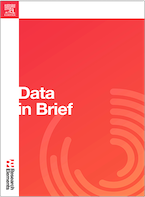
Using demographic, psychosocial, behavioural and safety-related factors to assess cyclists' behaviour: A comparative approach across 19 countries
Sergio Useche, Francisco Alonso, Aleksey Boyko, Polina Buyvol, Isaac Castañeda, Boris Cendales, Arturo Cervantes, Tomas Echiburu, Mireia Faus, Zuleide Feitosa, Cesareo Fernandez, Javier Gene-Morales, Bas de Geus, Jozef Gnap, Mohd K. Ibrahim, Kira H. Janstrup, Ignacio Lijarcio, Irina Makarova, Miroslava Mikusova, Mette Møller, Sylvain G. Ngueuteu-Fouaka, Steve O'Hern, Mauricio Orozco-Fontalvo, German Rojas, Ksenia Shubenkova, Felix Siebert, Jose Soto, Amanda Stephens, Yonggang Wang, Linus Zeuwts, Zahir H. Zulkipli, Rich McIlroy
(2024). ArticleData in Brief. Num.54:110278
This Data in Brief (DiB) article presents the differences in cycling behaviors related to violations, errors, and positive behaviors by region. The study data were collected by means of a structured questionnaire applied to a full sample of 7,001 participants from 19 countries, distributed over 5 continents. This paper proposes descriptive statistics, as well as common statistical tests. The aim is to enable authors to make their own analyses, not to provide precise interpretations. For further information about the macro project supporting the collection of these data, it is advised to refer to the paper titled “Cross-culturally approaching the cycling behavior questionnaire (CBQ):...
This Data in Brief (DiB) article presents the differences in cycling behaviors related to violations, errors, and positive behaviors by region. The study data were collected by means of a structured questionnaire applied to a full sample of 7,001 participants from 19 countries, distributed over 5 continents. This paper proposes descriptive statistics, as well as common statistical tests. The aim is to enable authors to make their own analyses, not to provide precise interpretations. For further information about the macro project supporting the collection of these data, it is advised to refer to the paper titled “Cross-culturally approaching the cycling behavior questionnaire (CBQ): Evidence from 19 countries”, published in Transportation Research Part F: Traffic Psychology and Behavior.
Leer más Ocultar DOI: 10.1016/j.dib.2024.110278ISSN: 2352-3409 -
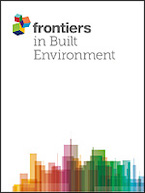
Editorial: Data science methods for solving real-world problems in transportation, security and beyond
Mireia Faus, Francisco Alonso, Begoña Guirao, Mahdi Rezapour
(2024). ArticleFrontiers in Built Environment. Num.10:1388714
The contemporary world is rife with opportunities and challenges in the fields of security and transportation. Urbanization, globalization, digitalization, and population growth have all contributed to creating dynamic, complicated problems that need creative, practical solutions. Large and complex data sets generated in these domains can be analyzed, understood, and used with the help of solid tools provided by data science, which includes a wide range of techniques, including computer vision, machine learning, deep learning, statistics, natural language processing, etc. In fact, data science can potentially improve society’s safety and wellbeing as well as the effectiveness and...
The contemporary world is rife with opportunities and challenges in the fields of security and transportation. Urbanization, globalization, digitalization, and population growth have all contributed to creating dynamic, complicated problems that need creative, practical solutions. Large and complex data sets generated in these domains can be analyzed, understood, and used with the help of solid tools provided by data science, which includes a wide range of techniques, including computer vision, machine learning, deep learning, statistics, natural language processing, etc. In fact, data science can potentially improve society’s safety and wellbeing as well as the effectiveness and performance of security and transportation systems. In this sense, some reflections linked to the Research Topic are raised, such as how data science can contribute to improving transport management and what is the impact of road infrastructure, urban design and transport systems in developing more sustainable and safer mobility for citizens? Or can data science identify which variables influence users’ driving decisions and behaviours? Consequently, this Research Topic aims to respond to these issues and demonstrate the state-of-the-art research and advances in data science that can address real-world problems in transportation, security and beyond.
Leer más Ocultar DOI: 10.3389/fbuil.2024.1388714ISSN: 2297-3362 -

International Congress S2R-2024 (Safety, Security & Resilience Research in Europe)
Francisco Alonso
(2024). Participació en congressosEl Dr. Francisco Alonso, Director del INTRAS, ha participado en el International Congress S2R-2024 (Safety, Security & Resilience Research in Europe) SICUR 2024, celebrado en Madrid del 27 de febrero al 1 de marzo de 2024. El Dr. Alonso ha impartido su ponencia en la S11 "Mesa Digitalización en la Movilidad (segura) Empresarial y la Seguridad Vial Laboral (nuevo Marco)" donde se ha comentado el Marco de referencia para la Movilidad Segura y Seguridad Vial en el ámbito laboral que debemos actualizar pensando en la Movilidad 5.0 de la Empresa 5.0 SICUR es el gran referente internacional en España de la Seguridad que reúne a empresas, asociaciones, profesionales y usuarios de la seguridad...
El Dr. Francisco Alonso, Director del INTRAS, ha participado en el International Congress S2R-2024 (Safety, Security & Resilience Research in Europe) SICUR 2024, celebrado en Madrid del 27 de febrero al 1 de marzo de 2024. El Dr. Alonso ha impartido su ponencia en la S11 "Mesa Digitalización en la Movilidad (segura) Empresarial y la Seguridad Vial Laboral (nuevo Marco)" donde se ha comentado el Marco de referencia para la Movilidad Segura y Seguridad Vial en el ámbito laboral que debemos actualizar pensando en la Movilidad 5.0 de la Empresa 5.0 SICUR es el gran referente internacional en España de la Seguridad que reúne a empresas, asociaciones, profesionales y usuarios de la seguridad global en los ámbitos público y privado. La innovación y el desarrollo tecnológico son los grandes protagonistas de este encuentro profesional que aborda la seguridad integral desde cinco grandes áreas (Security, ciberseguridad, seguridad contra incendios y emergencias, seguridad laboral), con el objetivo de seguir favoreciendo el bienestar y el desarrollo social.
Leer más Ocultar -
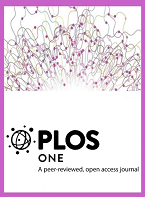
Invasion of privacy or structural violence? Harassment against women in public transport environments: A systematic review
Sergio Useche, Natura Colomer, Francisco Alonso, Mireia Faus
(2024). ArticlePLoS ONE. Num.19(2):e0296830
Background Despite being neglected for several decades, and in many countries, public transport environments have transformed into a reflection of social disparities and inequalities. Among these issues, harassment–a pervasive and worldwide gendered dynamic–has been demonstrated to negatively impact women’s behavioral trends, daily opportunities, and health impacts, as well as safety and security outcomes. Aim This systematic review aimed to examine a set of studies analyzing harassment against women in public transport environments, with a focus on key issues such as its prevalence, impact on transport dynamics, preventive strategies, and policing avenues documented in the scientific...
Background Despite being neglected for several decades, and in many countries, public transport environments have transformed into a reflection of social disparities and inequalities. Among these issues, harassment–a pervasive and worldwide gendered dynamic–has been demonstrated to negatively impact women’s behavioral trends, daily opportunities, and health impacts, as well as safety and security outcomes. Aim This systematic review aimed to examine a set of studies analyzing harassment against women in public transport environments, with a focus on key issues such as its prevalence, impact on transport dynamics, preventive strategies, and policing avenues documented in the scientific literature. Method A total of 575 indexed articles were filtered using the PRISMA methodology, resulting in a final selection of 28 original articles directly addressing the issue up to December 2023. Search strategies were developed and implemented across WOS, Scopus, NCBI, Google Scholar, and APA databases. Results Besides high frequency, widespread underreporting, and adverse effects on women’s safety, this review has identified correlations between harassment and travel behavioral adaptations. Furthermore, it reveals a noticeable disparity between the existing measures and those perceived as more effective by potential victims. These findings underscore the pressing need to listen to and promote the inclusion of women in decision-making regarding transport affairs. Conclusion The findings of this systematic review suggest that, despite a slightly limited body of research, the impact of transport harassment on women’s health and welfare is consistently supported in the literature. In addition to being largely explained by existing inequalities rooted in social determinants, transit harassment further exacerbates gender gaps, gaining prospective importance for transport settings.
Leer más Ocultar DOI: 10.1371/journal.pone.0296830ISSN: 1932-6203 -
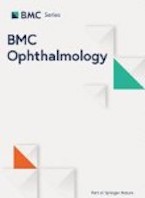
Could driving help us to “see better”? A comparative assessment of saccadic efficiency, visual speed, and attention
Andrés Gené, Francisco Alonso, Javier Gené, Pedro Monteiro, Sergio Useche
(2024). ArticleBMC Ophthalmology. Num.24:90
Background This study aimed at comparing drivers’ and non-drivers’ results in the Adult Developmental Eye Movement with Distractors test (ADEMd) and the Useful Field of View test (UFOV). Methods One hundred and twenty Spaniards (mean age 50.90 ± 17.32 years) without eye disease voluntarily participated in this cross-sectional descriptive study. Participants in a single experimental session completed a questionnaire on sociodemographic, health, eyesight, and driving information. They also performed the ADEMd and UFOV tests randomly following standardized protocols. The ADEMd is a visual-verbal test that measures saccadic efficiency and visual attention. Brown-Forsythe (B–F) tests with...
Background This study aimed at comparing drivers’ and non-drivers’ results in the Adult Developmental Eye Movement with Distractors test (ADEMd) and the Useful Field of View test (UFOV). Methods One hundred and twenty Spaniards (mean age 50.90 ± 17.32 years) without eye disease voluntarily participated in this cross-sectional descriptive study. Participants in a single experimental session completed a questionnaire on sociodemographic, health, eyesight, and driving information. They also performed the ADEMd and UFOV tests randomly following standardized protocols. The ADEMd is a visual-verbal test that measures saccadic efficiency and visual attention. Brown-Forsythe (B–F) tests with Games-Howell post-hoc adjustments were conducted to assess differences between groups. Groups were formed according to sex, age (young adults, adults, and older adults), and driver/non-driver for further analysis. Additionally, associations between dependent variables were assessed through Spearman’s correlations. Results Drivers obtained significantly better results in the ADEMd compared with non-drivers. Non-significant differences between drivers and non-drivers were encountered in the UFOV. Additionally, significant differences were observed between sexes and age groups. It is worth highlighting that non-driver’s age significantly correlated with worse ADEMd performance (rho = .637 to .716). This correlation was non-significant in drivers. Similarly, reading hours significantly correlated with better ADEMd performance in non-drivers (rho = − .291 to − .363), but not in drivers. The only significant correlations between ADEMd and UFOV tests were found in drivers (rho = .307 to .410). Conclusion Considering all the discussed results, it could be hypothesized that the driving task promotes abilities, such as oculomotor and cognitive function, which are relevant for the performance in the ADEMd. However, this hypothesis is based on correlational outcomes and further studies should causally assess this possible relation.
Leer más Ocultar DOI: 10.1186/s12886-024-03349-1ISSN: 1471-2415 -

“It’s okay because I’m just driving”: an exploration of self-reported mobile phone use among Mexican drivers
Sergio Useche, Francisco Alonso, Mireia Faus, Arturo Cervantes Trejo, Isaac Castañeda, Oscar Oviedo-Trespalacios
(2024). ArticlePeerJ. Num.12:e16899
Introduction Technological advancements have the potential to enhance people’s quality of life, but their misuse can have a detrimental impact on safety. A notable example is the escalating issue of distracted driving resulting from the use of mobile phones behind the wheel, leading to severe crashes and injuries. Despite these concerns, both drivers’ usage patterns and their risk-related associations remain scarcely documented in Mexico. Therefore, this descriptive study aimed to examine the mobile phone usage of Mexican drivers, its relationships to risk awareness and near-miss/crash involvement, and the self-reported underlying reasons for this behavior. Methods This cross-sectional...
Introduction Technological advancements have the potential to enhance people’s quality of life, but their misuse can have a detrimental impact on safety. A notable example is the escalating issue of distracted driving resulting from the use of mobile phones behind the wheel, leading to severe crashes and injuries. Despite these concerns, both drivers’ usage patterns and their risk-related associations remain scarcely documented in Mexico. Therefore, this descriptive study aimed to examine the mobile phone usage of Mexican drivers, its relationships to risk awareness and near-miss/crash involvement, and the self-reported underlying reasons for this behavior. Methods This cross-sectional study utilized a sample of 1,353 licensed Mexican drivers who took part in a nationwide series of interviews regarding their onboard phone use settings. Results A significant percentage of drivers (96.8%) recognize using a mobile phone while driving as high-risk behavior. However, only 7.4% reported completely avoiding its use while driving, with 22.4% identified as high-frequency users. Frequency was also found positively associated with the self-reported rate of near-misses and crashes. Furthermore, qualitative data analysis highlights the emergence of a ‘sense of urgency’ to attend to phone-related tasks in response to daily demands and life dynamics, offering a potential explanation for this behavior. Conclusion The results of this study suggest common patterns of onboard mobile use among Mexican drivers concerning driving situations and associated risks. This underscores the need for increased efforts to discourage onboard phone use in the country.
Leer más Ocultar DOI: 10.7717/peerj.16899ISSN: 2167-8359 -

"Cyclist at 12 o’clock!”: a systematic review of in-vehicle advanced driver assistance systems (ADAS) for preventing car-rider crashes
Sergio Useche, Mireia Faus, Francisco Alonso
(2024). ArticleFrontiers in Public Health. Num.12:1335209
Introduction: While Advanced Driver Assistance Systems (ADAS) have become aprominent topic in road safety research, there has been relatively little discussionabout their effectiveness in preventing car collisions involving specific vulnerableroad users, such as cyclists. Therefore, the primary objective of this systematicliterature review is to analyze the available evidence regarding the effectivenessof in-vehicle ADAS in preventing vehicle collisions with cyclists.Methods: To achieve this goal, this systematic review analyzed a selection oforiginal research papers that examined the effectiveness of ADAS systems inpreventing car-cyclist collisions. The review followed the PRISMA...
Introduction: While Advanced Driver Assistance Systems (ADAS) have become aprominent topic in road safety research, there has been relatively little discussionabout their effectiveness in preventing car collisions involving specific vulnerableroad users, such as cyclists. Therefore, the primary objective of this systematicliterature review is to analyze the available evidence regarding the effectivenessof in-vehicle ADAS in preventing vehicle collisions with cyclists.Methods: To achieve this goal, this systematic review analyzed a selection oforiginal research papers that examined the effectiveness of ADAS systems inpreventing car-cyclist collisions. The review followed the PRISMA protocol,which led to the extraction of 21 eligible studies from an initial pool of 289sources indexed in the primary scientific literature databases. Additionally, wordcommunity-based content analyses were used to examine the research topicsand their links within the current scientific literature on the matter.Results: Although the current number of studies available is still scarce (mostsources focus on car-motorcyclist or car-pedestrian crashes), the overall qualityof the available studies has been reasonably good, as determined by the selectedevaluation methods. In terms of studies’ outcomes, the literature supports thevalue of in-vehicle ADAS for preventing car-cyclist crashes. However, threatfulside effects such as unrealistic expectations of these systems and users’overconfidence or desensitization are also highlighted, as well as the need toincrease driver training and road user awareness.Conclusion: The results of this study suggest that Advanced Driver AssistanceSystems have significant potential to contribute to the prevention of drivingcrashes involving cyclists. However, the literature emphasizes the importanceof concurrently enhancing user-related skills in both ADAS use and road-userinteraction through educational and training initiatives. Future research shouldalso address emerging issues, such as ADAS-related behavioral ergonomics,and conduct long-term effectiveness assessments of ADAS in preventing car-cycling crashes and their subsequent injuries
Leer más Ocultar DOI: 10.3389/fpubh.2024.1335209ISSN: 2296-2565 -

eMobility Expo & World Congress
Francisco Alonso
(2024). Participació en congressosEl Dr. Francisco Alonso, Director del INTRAS, participa en el eMobility Expo & World Congress (EME VLC) que se celebra del 13 al 15 de febrero de 2024 en Feria Valencia. El Dr Alonso presentará la ponencia "La consideración del usuario en la movilidad eléctrica desde la I+D+i" el día 13, en la que se exponen algunas líneas y procedimientos para acometer la Investigación, el Desarrollo y la Innovación en la temática de la “movilidad eléctrica” sobre las implicaciones del “factor humano”, así como ciertas evidencias que permiten dibujar un marco estratégico y las consiguientes derivadas medidas y contramedidas. Por otro lado, participará en la mesa redonda "Educación y empleo: Conectando...
El Dr. Francisco Alonso, Director del INTRAS, participa en el eMobility Expo & World Congress (EME VLC) que se celebra del 13 al 15 de febrero de 2024 en Feria Valencia. El Dr Alonso presentará la ponencia "La consideración del usuario en la movilidad eléctrica desde la I+D+i" el día 13, en la que se exponen algunas líneas y procedimientos para acometer la Investigación, el Desarrollo y la Innovación en la temática de la “movilidad eléctrica” sobre las implicaciones del “factor humano”, así como ciertas evidencias que permiten dibujar un marco estratégico y las consiguientes derivadas medidas y contramedidas. Por otro lado, participará en la mesa redonda "Educación y empleo: Conectando talentos con la movilidad del futuro", que se celebrará el día 15, donde se debatirá cómo mejorar la conexión entre la formación académica y las oportunidades laborales en el campo de la movilidad sostenible, discutiendo iniciativas para garantizar que los graduados estén listos para enfrentar los desafíos de este sector en evolución. El eMobility World Congress 2024 es una conferencia internacional que proporciona la plataforma más relevante e influyente para el futuro de la movilidad, a través de la sostenibilidad y la tecnología.
Leer más Ocultar -

Publicidad social de campañas sobre tráfico, movilidad, transporte y seguridad vial: Evolución histórica de las estrategias comunicativas y percepción social de su impacto
Mireia Faus Real
(2024). TesisDirectores: Francisco Alonso y Cesáreo Fernández.
Calificación: Sobresaliente "cum laude", con mención "Internacional"









